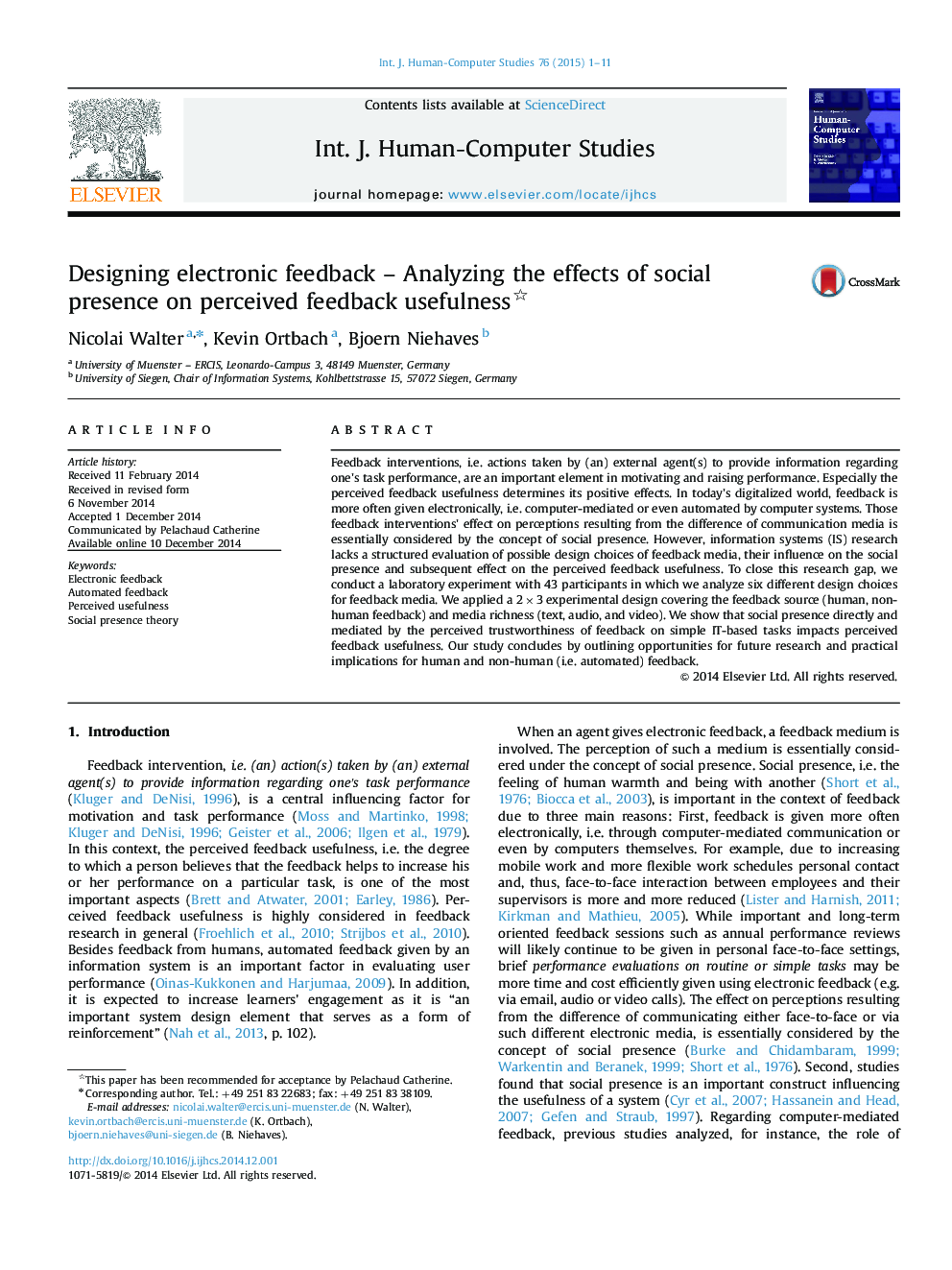| Article ID | Journal | Published Year | Pages | File Type |
|---|---|---|---|---|
| 400850 | International Journal of Human-Computer Studies | 2015 | 11 Pages |
•We model the link between social presence and perceived feedback usefulness.•We analyze six different feedback design choices with respect to social presence.•We find that social presence is dependent on media richness and feedback source.•Social presence is an important factor determining perceived feedback usefulness.•This effect is partly mediated by perceived trustworthiness of the feedback.
Feedback interventions, i.e. actions taken by (an) external agent(s) to provide information regarding one׳s task performance, are an important element in motivating and raising performance. Especially the perceived feedback usefulness determines its positive effects. In today׳s digitalized world, feedback is more often given electronically, i.e. computer-mediated or even automated by computer systems. Those feedback interventions׳ effect on perceptions resulting from the difference of communication media is essentially considered by the concept of social presence. However, information systems (IS) research lacks a structured evaluation of possible design choices of feedback media, their influence on the social presence and subsequent effect on the perceived feedback usefulness. To close this research gap, we conduct a laboratory experiment with 43 participants in which we analyze six different design choices for feedback media. We applied a 2×3 experimental design covering the feedback source (human, non-human feedback) and media richness (text, audio, and video). We show that social presence directly and mediated by the perceived trustworthiness of feedback on simple IT-based tasks impacts perceived feedback usefulness. Our study concludes by outlining opportunities for future research and practical implications for human and non-human (i.e. automated) feedback.
